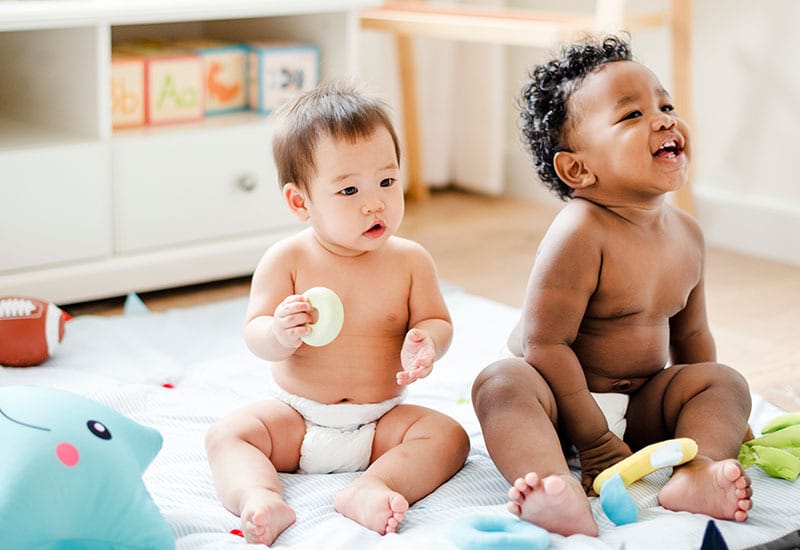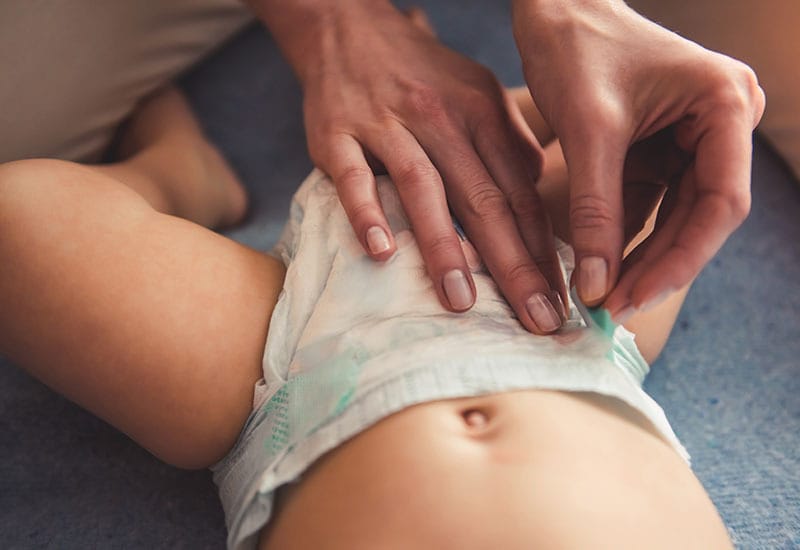THURSDAY, DECEMBER 10, 2020
In their first year alone, a baby will wear an estimated 2,500 disposable diapers. When buying diapers, parents are likely to consider absorbency, fit and comfort as the most important features. But recent scientific research highlights the fact that the ingredients and materials used to make the diapers may be just as important, if not more so: The diaper itself could potentially harm a child’s health.
Our skin is a dynamic organ that develops and matures over time. A newborn’s skin is significantly thinner and more permeable than that of an adult and can more readily absorb chemicals. The skin in the area around a baby’s genitals is even thinner and more susceptible to exposure to potentially harmful chemicals, such as dyes, chlorine and phthalates, all of which may be found in diapers.

A 2019 study by the French Agency for Food, Environmental and Occupational Health & Safety, or ANSES, tested 23 diapers from bestselling products on the French market. Researchers found a number of volatile organic compounds, phthalates, formaldehyde, pesticides and other harmful chemicals. Several of the chemicals detected exceeded levels the agency deems a risk to infant health.
Exposure to chemicals at an early age can have serious and long-lasting health implications. According to the World Health Organization, exposure to hazardous chemicals, air pollutants and pesticides can lead to irreversible damage and impair children’s physical and cognitive development. Long-term exposure to high concentrations of volatile organic compounds, or VOCs, can damage the liver, kidneys and central nervous system. In addition, some VOCs, pesticides and formaldehyde are linked to cancer, and some phthalates can interfere with hormones that can affect proper growth and development.
Unlike menstrual products, baby diapers are not classified as medical devices, so they are not regulated by the Food and Drug Administration. The diaper industry is regulated by the Consumer Product Safety Commission, which does not require diaper manufacturers to disclose their ingredients or test their products or materials for a variety of chemicals to ensure safety. The agency requires that baby diapers be tested for lead.
There are a lot of diaper options on the market: reusable and disposable, scented and unscented, and many other types. Because of the lack of adequate regulations and ingredient disclosure in the diaper industry, and the frequent use of potentially harmful chemicals, parents may find it hard to figure out which options are best for their little ones and the environment.
EWG’s comprehensive Guide to Safer Diapers outlines what every parent or caregiver should know before buying another diaper. EWG has also added diapers to the growing list of products that are EWG VERIFIED®, certifying that they meet our strictest standards for health and transparency. EWG VERIFIED diapers are free from our extensive list of ingredients and materials linked to harm, and all ingredients must be disclosed.

Quick Tips for Choosing Safer Diapers
- Read the ingredients. Be wary of products that do not disclose the ingredients. If your brand of choice does not, contact the manufacturer to encourage it to disclose all ingredients.
- Consider buying cloth diapers. They are not a feasible option for everyone, and not all cloth diapers are made equally. However, organic cloth diapers may be a good way to avoid some of the worrisome chemicals in disposable products. They also tend to be better for the environment, as they produce less plastic waste and use less energy to manufacture.
- Although it may be near-impossible to find disposable diapers made without plastic components, look for brands that minimize the use of plastic in their products and packaging. Plastic materials can emit VOCs that can harm health. Note that even plastics produced from plants, or bioplastics, may have concerns similar to their petroleum-based counterparts.
- Choose a brand that uses unbleached pulp or pulp bleached using totally chlorine-free techniques, rather than elemental chlorine-free, or ECF, techniques. ECF uses a chlorine derivative, which is linked to skin, nose and throat irritation and is toxic to aquatic systems.
- Avoid products with fragrances or lotions, or other skin-conditioning agents. If you’d like to apply a lotion to your baby, choose a product that meets your standards and apply it before diapering. This allows you to have more control over what is going on your baby’s skin, and you can decide whether it needs a conditioning product.
- Look for brands free from phthalates, parabens, bisphenols, the fluorinated compounds known as PFAS, and flame-retardant chemicals.
- Choose plain, undyed diapers or ones with minimal designs. Many of the dyes used in diapers have been linked to health harms or may be contaminated with toxic heavy metals.
- Ensure that your brand of choice has tested its products adequately for harmful ingredients and contaminants.
- Look for environmental certifications, like the Forest Stewardship Council’s, to ensure that ingredients and materials are responsibly sourced. Choose an EWG VERIFIED diaper, if possible.
December 10, 2020 at 08:19PM
https://ift.tt/39Zu9LC
EWG's Healthy Living: Quick Tips to Safer Diapers - Environmental Working Group
https://ift.tt/2Comt7j
Diapers

No comments:
Post a Comment